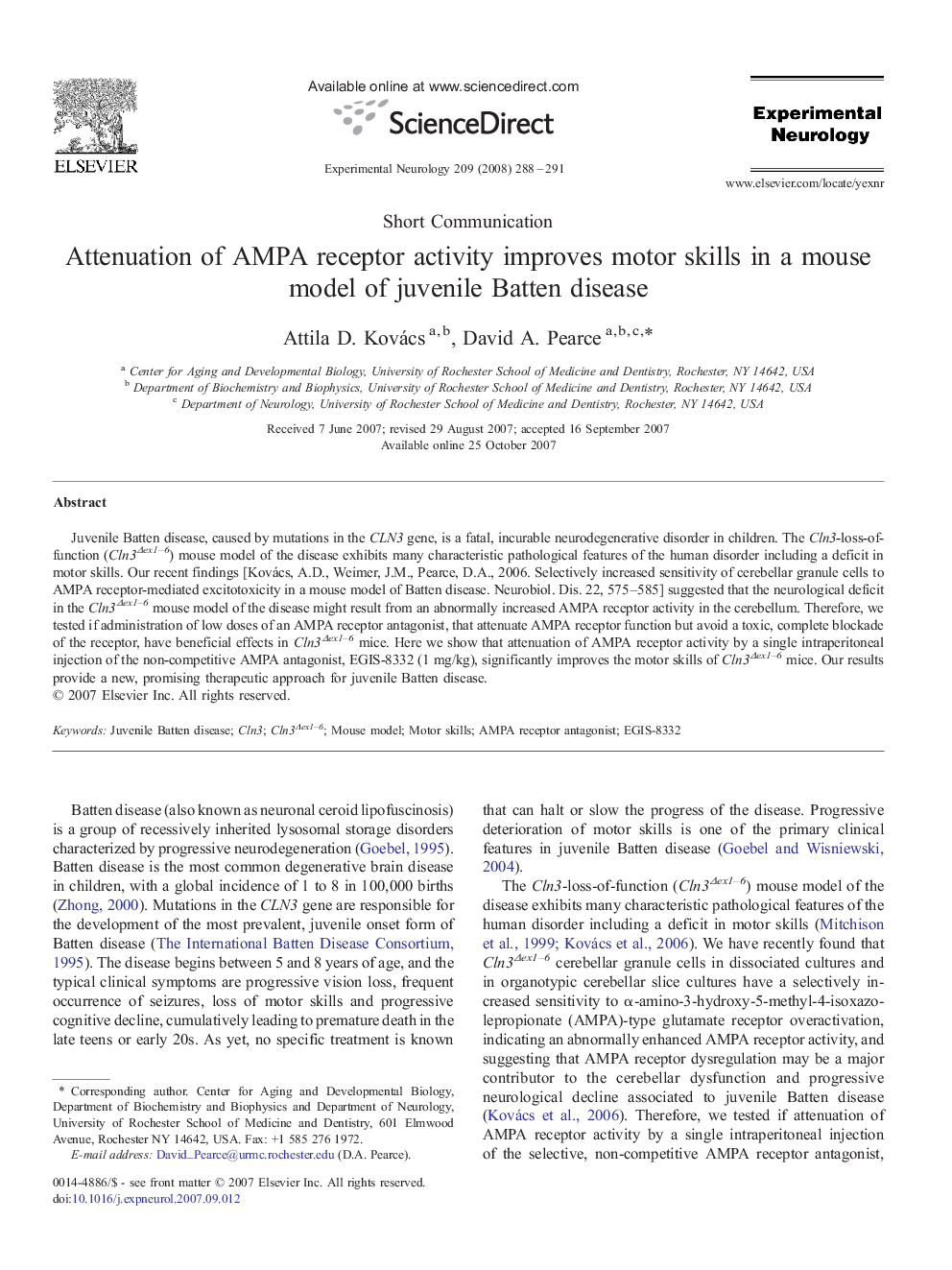| Article ID | Journal | Published Year | Pages | File Type |
|---|---|---|---|---|
| 6019553 | Experimental Neurology | 2008 | 4 Pages |
Abstract
Juvenile Batten disease, caused by mutations in the CLN3 gene, is a fatal, incurable neurodegenerative disorder in children. The Cln3-loss-of-function (Cln3Îex1-6) mouse model of the disease exhibits many characteristic pathological features of the human disorder including a deficit in motor skills. Our recent findings [Kovács, A.D., Weimer, J.M., Pearce, D.A., 2006. Selectively increased sensitivity of cerebellar granule cells to AMPA receptor-mediated excitotoxicity in a mouse model of Batten disease. Neurobiol. Dis. 22, 575-585] suggested that the neurological deficit in the Cln3Îex1-6 mouse model of the disease might result from an abnormally increased AMPA receptor activity in the cerebellum. Therefore, we tested if administration of low doses of an AMPA receptor antagonist, that attenuate AMPA receptor function but avoid a toxic, complete blockade of the receptor, have beneficial effects in Cln3Îex1-6 mice. Here we show that attenuation of AMPA receptor activity by a single intraperitoneal injection of the non-competitive AMPA antagonist, EGIS-8332 (1Â mg/kg), significantly improves the motor skills of Cln3Îex1-6 mice. Our results provide a new, promising therapeutic approach for juvenile Batten disease.
Related Topics
Life Sciences
Neuroscience
Neurology
Authors
Attila D. Kovács, David A. Pearce,
